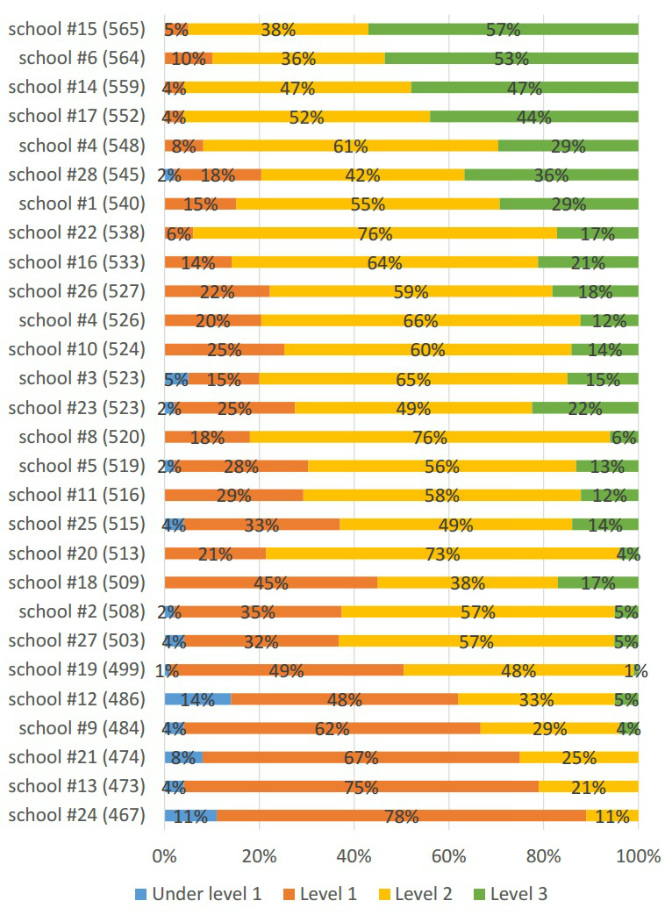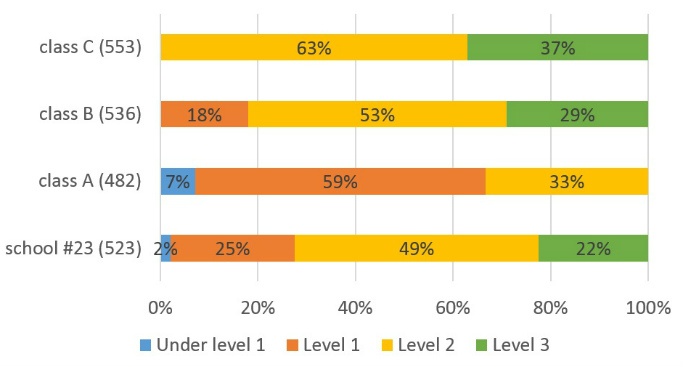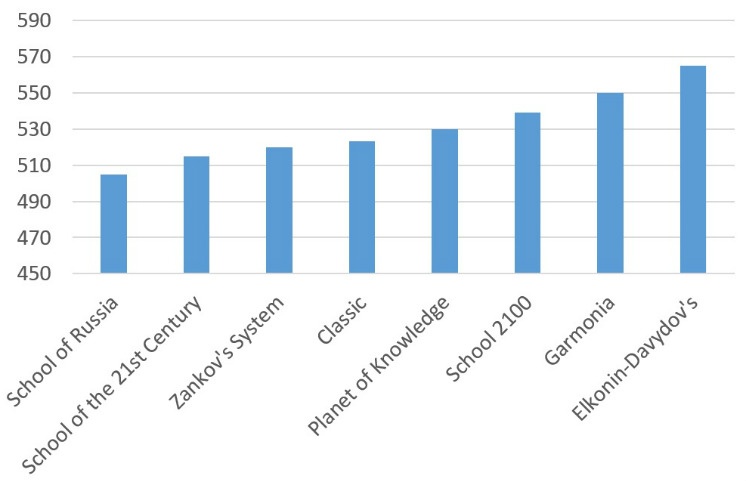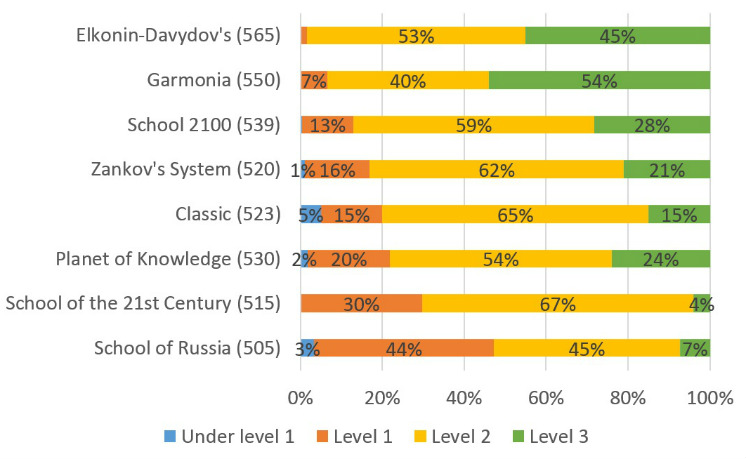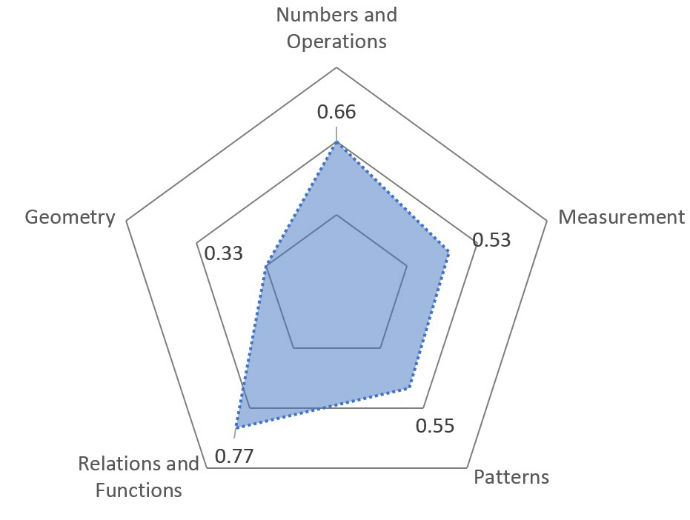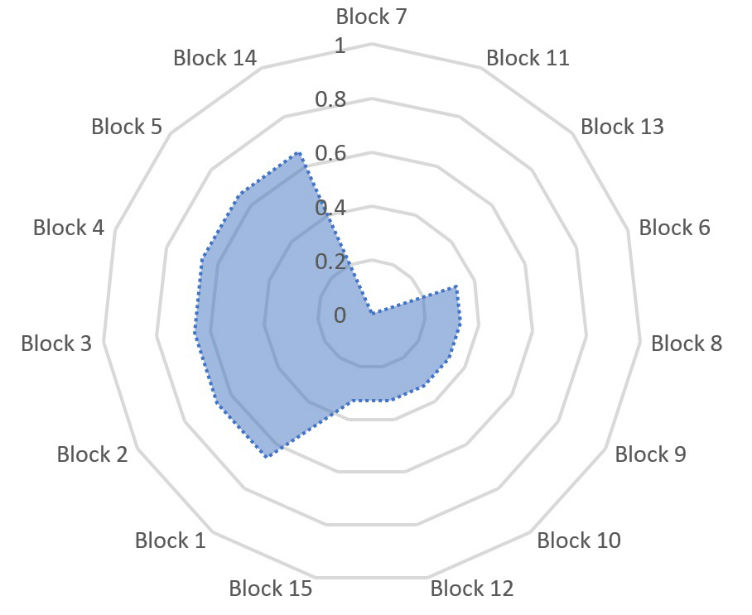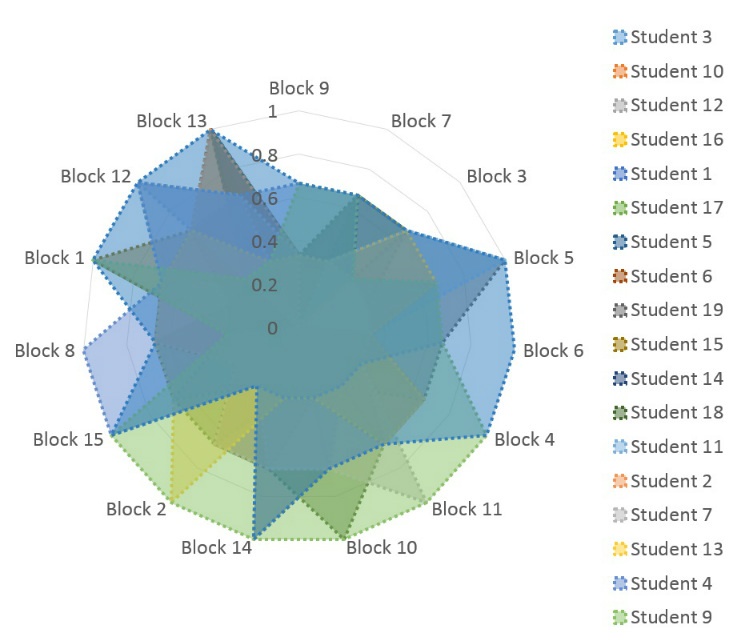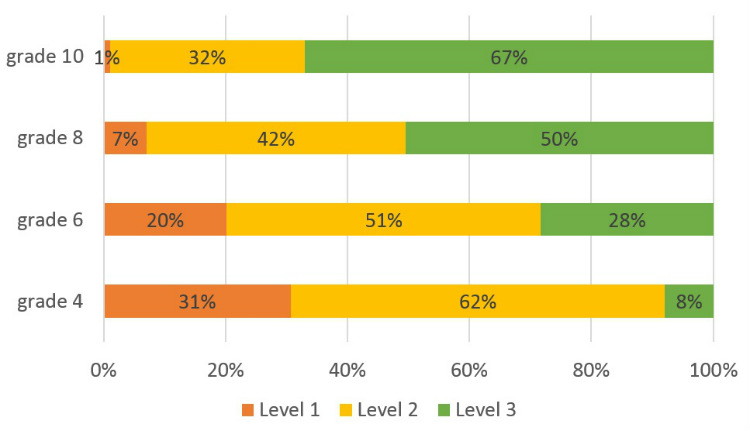To illustrate SAM features we use the research that took place in one of the Russian cities. In frames of this research all students of 5th grade of all schools were tested.

Figure 7. Structure of average score of a school. Different teaching approaches are used in different classes.
Graphs show the structure of school’s average score. Graphs feature that different teaching approaches are used in classes. Graphs show the quality of knowledge acquisition in every class and as the result – the contribution of each class to the average score.
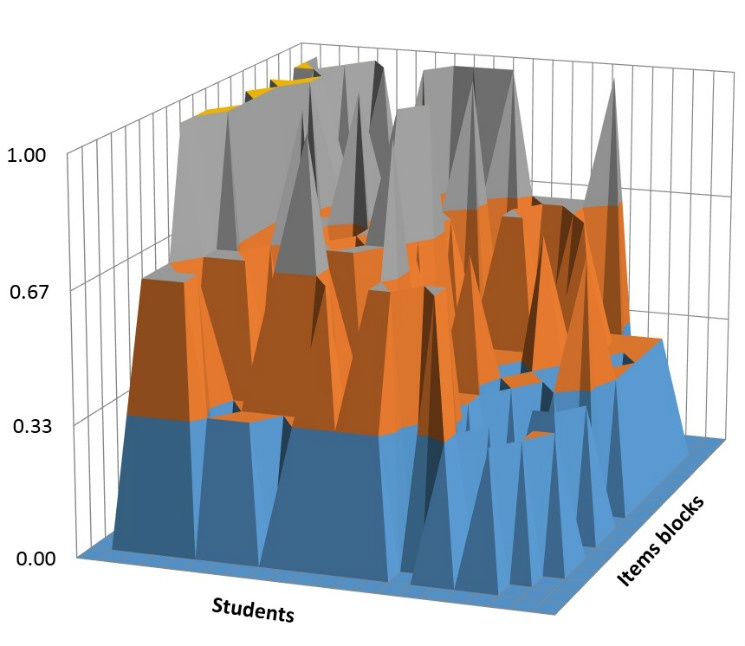
Figure 11. Solving of test items blocks by students of a selected class.
Graphs show how students of same class solve test items. Data forms a cube when class achieves the maximum result. As the level of individual achievements is not maximal, the graph forms into un-even extensional figure. This figure points to problem spots in the class for individual students and for least solved items blocks.






